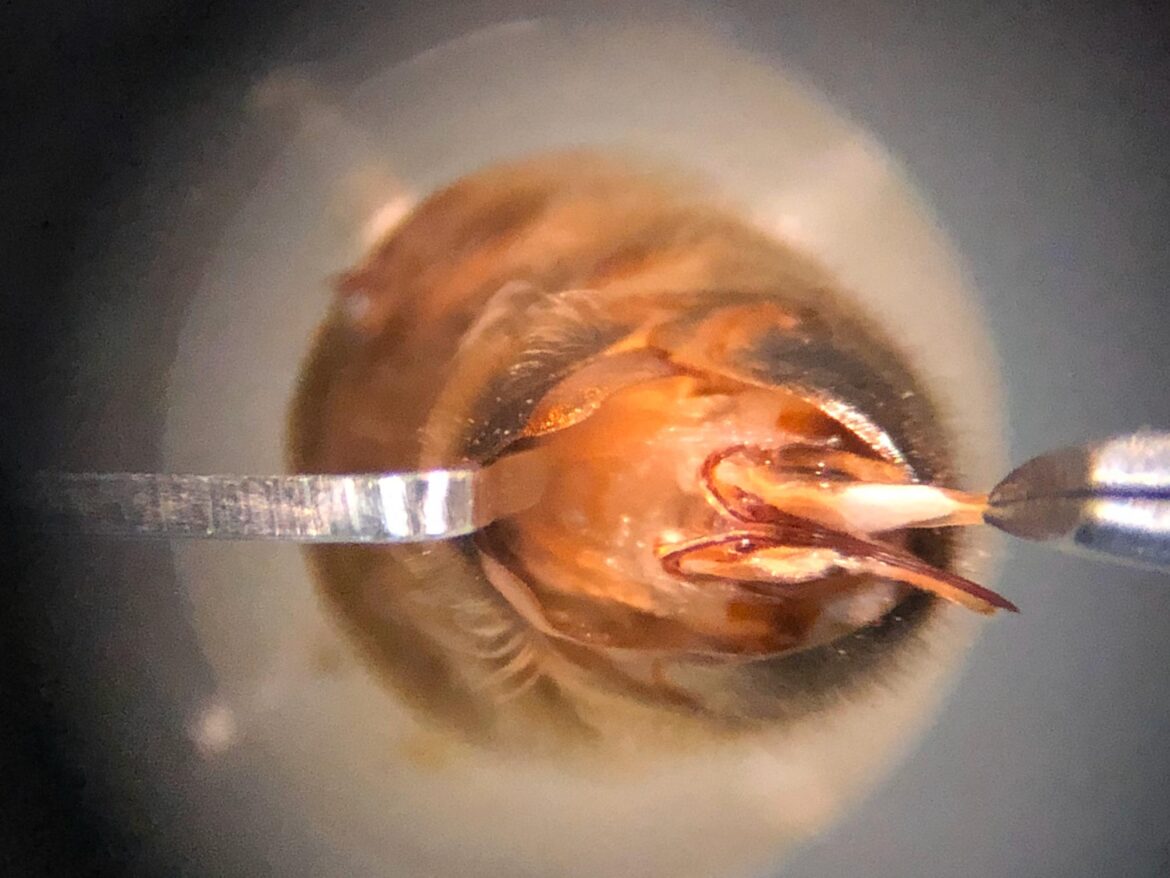
Artificial insemination has been used for several years in beekeeping in order to help prevent Varroa infestation, a deadly parasite which can wipe out entire bee colonies. With this technique, bees that clean their hives efficiently can be selected and bred.
These bees are naturally found in the wild and are used for breeding; they are known as VSH (Varroa Sensitive Hygiene). They detect parasites within the cells and get rid of them before they can breed in the hive.
Furthermore, queen selection is based on seven main criteria: aggressiveness, honey harvest, behaviour in the hive, brood quality, hive management, glossa length and wings length.
- Video : Set up of insemination bench.
- Picture 1 : CO2 anesthesia of the queen.
- Picture 2 : The queen is placed upside down in a small plastic container.
- Picture 3 : The sting is held by a tiny pair of tweezers, then the abdomen is opened with a hook and the semen inserted.
- Picture 4 : The way is cleared to allow access to the insemination tube.
- Picture 5 : Drone with endophallus everted. Semen collection using a pipette (small silvery spot above the white area).
